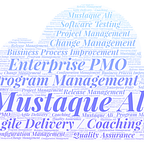Power Apps— Troubleshooting Performance Issues — Part 1
Troubleshooting slowness in Power Apps can be challenging due to various factors like complexity of data sources, non-delegable queries, heavy on-start or load logic, browser and device limitations, caching issues, concurrent users, and network latency.
When you are troubleshooting, it’s important to look at the big picture. That way, you can figure out where the problem is. To do this, you need to see the whole system how it is behaving, and how the interactions between the different parts of the system are affecting each other. That will help you find the root cause of the problem and the best way to fix it.
Also note, that the power platform has built-in optimizers in place so your issue might disappear after some time.
Identify the Pattern
There are generally three patterns to consider:
- Consistently Slow: If the system has always been slow, especially during new customizations or development work on the development instance.
- Slowness after known event: If the slowness coincided with specific events, such as deploying a solution to production.
- Sudden Slowness: If the system suddenly became slow without any known events, like experiencing sluggishness.
Additionally, consider whether the issue impacts all users or only specific ones (e.g., certain sites or offices).
Where to Start?
There are a few areas that can be drilled down for further investigation.
- Power Apps
- Power Automate
- Power Pages
- API throttling
- Cache Issues
- SQL Related issues
- Network basic analysis
- Network deep guidance
- Potential False Positives.
Power Apps Issues
Troubleshooting performance issues in Power Apps can be challenging. However, using the right tools and following different steps can help you identify and resolve the problem.
Canvas Apps
- Large Datasets Loading Slowly: Ensure you only load the data you need immediately and paginate or cache other data.
- Too Many Columns Retrieved: Select only the necessary columns to reduce network overhead and memory usage.
- Connectors and Delegation: Understand how connectors work and ensure proper delegation to avoid issues with data retrieval.
- Custom Connectors: If using custom connectors, ensure they are deployed in the same environment as your database.
- Use IntelliSense and App Checker: These tools can help identify and fix common issues in your app.
- Monitor and Variables Panel: Use these to debug and monitor data being sent and returned.
- Try Different Controls: If a specific control is causing issues, try using a different control with the same data type.
Model Driven Apps
- Use Monitor: This tool helps diagnose performance issues by providing real-time insights into app behavior.
- Check Form Components: Sometimes, specific form components can cause issues. You can use URL parameters to disable various form components and isolate the problematic ones.
- Review Customizations: Custom scripts or plugins can sometimes lead to performance bottlenecks. Temporarily remove customizations to see if performance improves.
- Optimize Data Retrieval: Ensure that your app retrieves only the necessary data. Avoid loading large datasets all at once. Instead, paginate and cache data as needed.
- Analyze Network Requests: Use browser developer tools to analyze network requests and identify any delays or bottlenecks.
Power Automate
You can use the below steps to troubleshoot the performance issues in the flows.
- Analyze Flow Run History: Check the run history of your flows to identify where delays or failures occur. This can help pinpoint specific actions or steps causing issues.
- Check for Throttling: Some connectors have limits on the number of actions per minute. If you exceed these limits, your flow might slow down or fail. Look for “429 (Too Many Requests)” errors in your flow run details.
- Review Data Size: Large datasets can slow down your flows. Consider reducing the size of the data being processed or breaking it into smaller chunks.
- Use Action Analytics: Power Automate provides analytics to help you understand how your actions are being used. This can help you identify and address performance bottlenecks.
- Service Performance: Sometimes, the external service your flow connects to might be slow. For example, a slow SQL query can delay your flow. Ensure that the services you connect to are performing optimally.
Power Pages
There are a few steps to check the Power Pages' performance.
- Use the Site Checker Tool: This tool helps identify and resolve potential website issues. It checks for common problems and provides recommendations for improvements.
- Analyze Network Requests: Use browser developer tools to analyze network requests and identify any delays or bottlenecks. Look for slow-loading resources or large files that might be impacting performance.
- Optimize Content Delivery: Ensure that images, scripts, and other resources are optimized for fast loading. Use content delivery networks (CDNs) to distribute content more efficiently.
- Review Customizations: Custom scripts or plugins can sometimes lead to performance bottlenecks. Temporarily disable customizations to see if performance improves.
- Monitor Server Performance: Check the performance of the server hosting your Power Pages site. Ensure it has sufficient resources and is not experiencing high load or other issues.
By following these steps, you can systematically identify and resolve performance issues in your Power Pages site.
